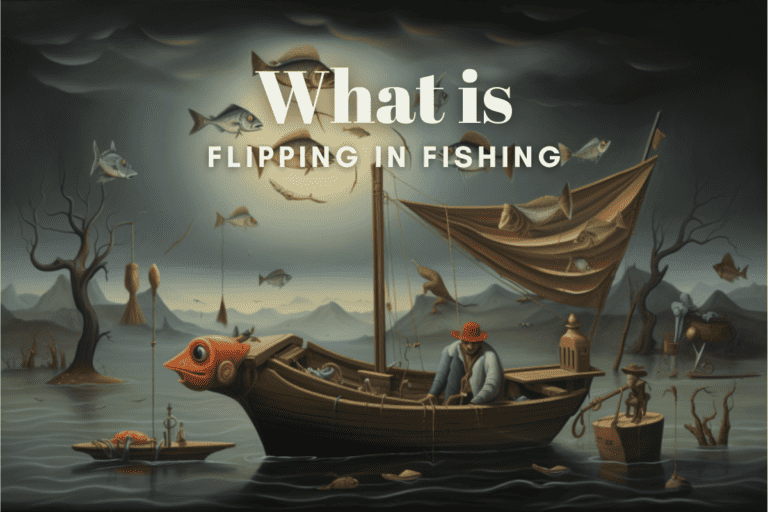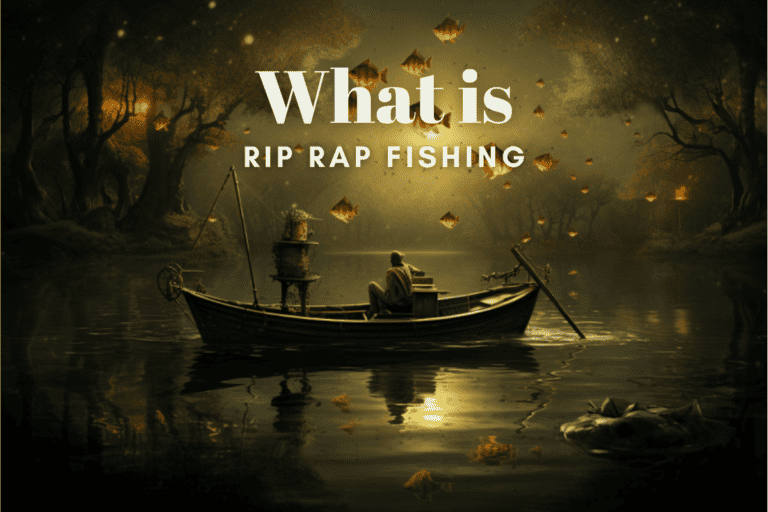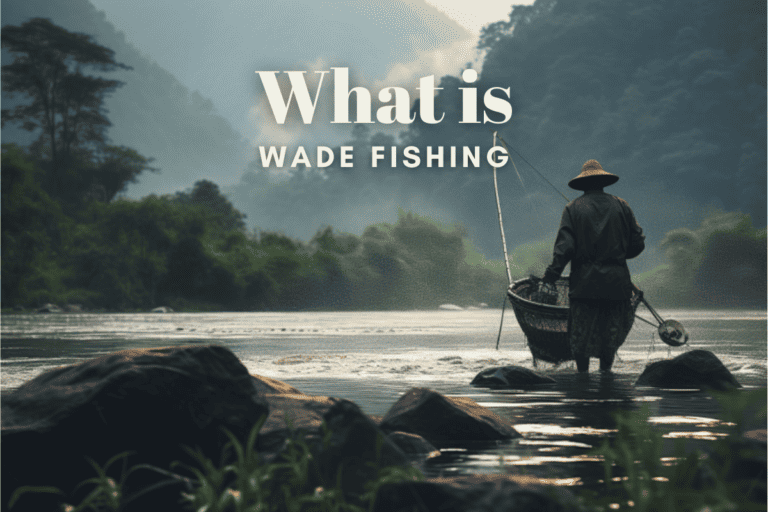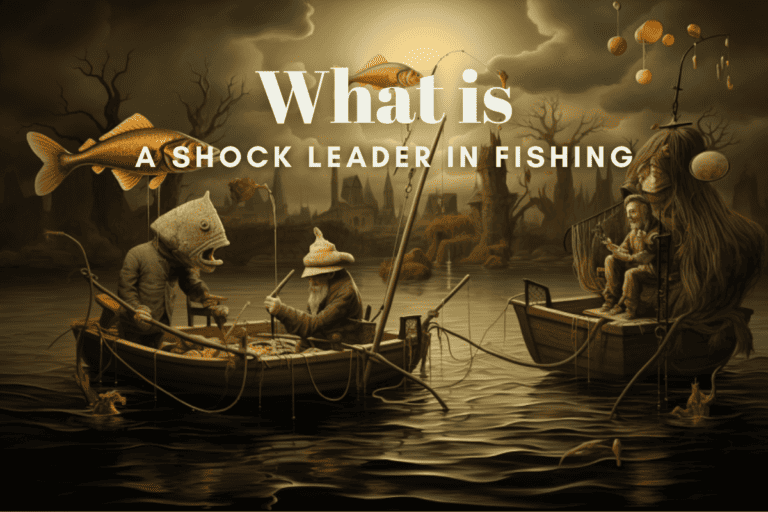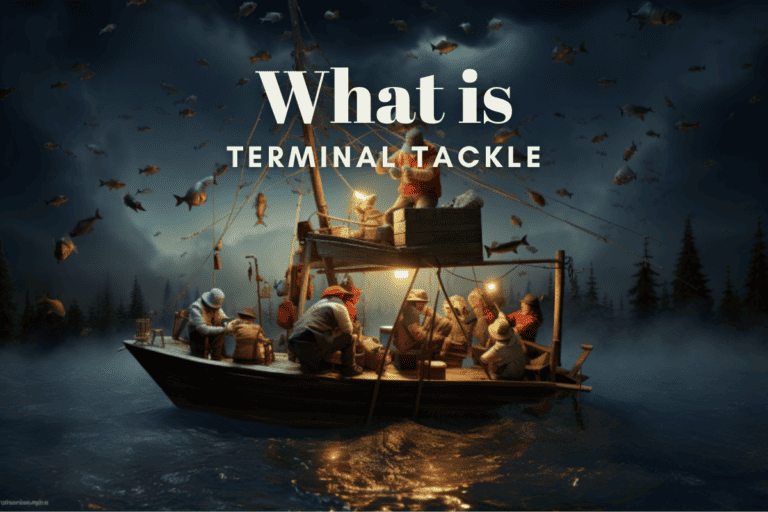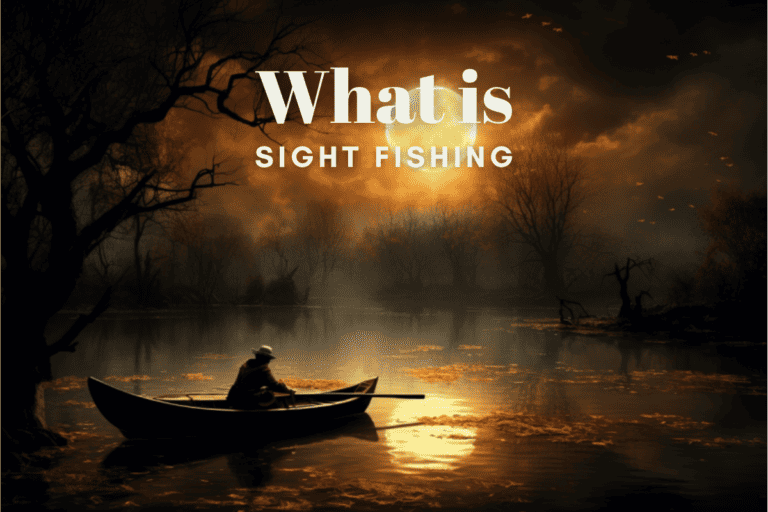What is Subsistence Fishing? Fishing For Food

Subsistence Fishing is a fishing term that not many know about. Like a lifeline woven through a community, subsistence fishing is crucial to rural eastern North Carolina. It’s not just about survival, it’s a cultural cornerstone, influencing social interactions and revealing racial patterns.
Despite potential risks from questionable water and fish quality, they can’t afford to stop. This article dives into the rich waters of subsistence fishing, exploring its vital role in these communities.
What is Subsistence Fishing?
In understanding the vital role of subsistence fishing in rural communities, it’s essential to recognize that subsistence fishers don’t rely on any other sources of income. They live close to the resource and they’re often associated with traditional practices, using low-technology gear to harvest fish to meet their basic food requirements.
It’s a way of life that’s intimately tied to their surroundings and traditions. They’re part of a community that values the simple, sustainable use of natural resources.
Their fishing gear isn’t just tools, but symbols of cultural heritage, passed down through generations. Subsistence fishing isn’t merely about survival—it’s about maintaining a connection with their roots, meeting nutritional needs, and preserving a way of life that offers a sense of belonging and identity.
The Significance of Fishing in Rural Eastern North Carolina
People in the eastern part of North Carolina rely heavily on catching fish, not just as a livelihood, but also as a means of nourishment and social interaction. It’s not just about the catch; it’s about the bonds formed, the stories shared, the traditions passed down.
They’ve built a community centered around fishing, where everyone plays a role, from the seasoned fisherman to the eager youngster. It’s a way of life that’s deeply woven into their cultural fabric.
The quality of water and fish influences their daily catch. Folks here understand that nature’s bounty is precious, and they respect it. They’re a close-knit community, united by a common thread – fishing.
It’s more than just a livelihood; it’s their heritage, their identity.
Exploring Racial and Social Interactions in Subsistence Fishing
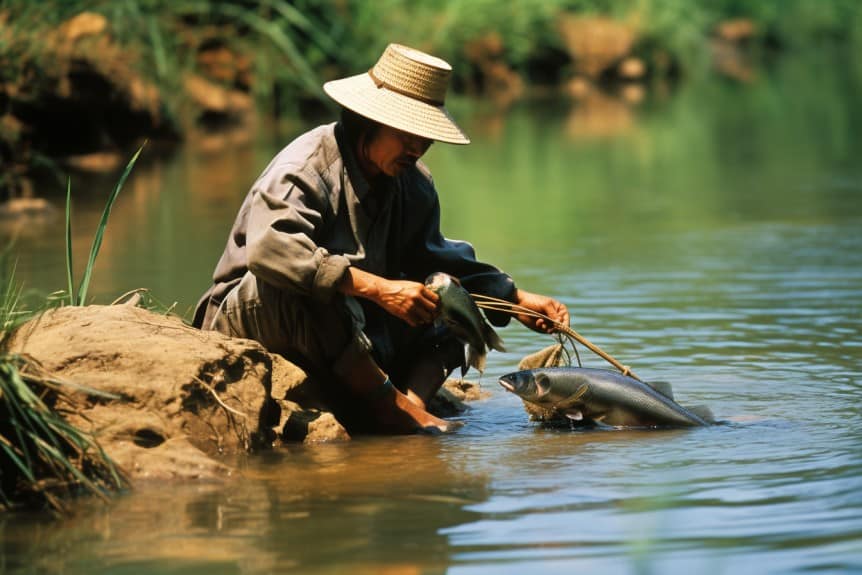
Exploring the dynamics of interracial relationships, researchers have discovered that subsistence fishing can reveal patterns of racial and ethnic participation. It’s an arena where the lines of race and ethnicity blur, creating a sense of community and belonging.
Fishing isn’t just about catching fish; it’s about the shared experiences and stories that build bonds and challenge stereotypes. It’s where the old, young, black, white, and everyone in between can find common ground.
Fishing practices can reflect the cultural heritage of a community, adding richness to its social fabric. It’s a tradition passed down generations, a shared legacy that binds a community together. It’s an intimate dance with nature, a testament to resilience.
Their findings suggest that subsistence fishing is more than a means of survival; it’s a social equalizer.
Perception Versus Reality: The Quality of Water and Fish in Subsistence Fishing
They’ve found that the perception of water and fish quality can dramatically influence practices in areas heavily reliant on these resources. It’s a delicate balance, you see, where folks must trust their instincts but also respect the science behind it all.
In rural communities, where subsistence fishing is part of daily life, it’s not just about catching the biggest fish. It’s about the health of the water, the quality of the catch. Sometimes, what’s perceived as good enough might differ from the tested reality, leading to tough decisions.
But isn’t that what community’s about? Navigating these waters together? Understanding, learning, adapting – that’s the true catch. Because at the end of the day, it’s about more than just fish. It’s about survival, tradition, and the ties that bind us to our shared resources.
Final Thoughts
Subsistence fishing is the lifeblood of many rural communities in Eastern North Carolina. The practice paints a vivid tapestry of racial and social interactions, while underscoring the stark reality of survival.
Despite the potential dangers of poor water and fish quality, these communities soldier on, proving that subsistence fishing isn’t just a method of survival – it’s a testament to their resilience and indomitable spirit.
Frequently Asked Questions (FAQ)
Q: What is Subsistence Fishing?
A: Subsistence fishing is the practice of fishing for the purpose of obtaining food for direct personal or family consumption. It is a traditional method of obtaining seafood and other fishery resources for sustenance.
Q: How is subsistence fishing different from commercial and recreational fishing?
A: Subsistence fishing is primarily for personal or family consumption, whereas commercial fishing involves selling or bartering the catch for profit, and recreational fishing is done for leisure or sport.
Q: Can you provide a definition of subsistence fishing?
A: Subsistence fishing can be defined as a fishing activity that is primarily for the purpose of obtaining seafood and other fishery resources for direct personal or family consumption, rather than for commercial or recreational purposes.
Q: Is subsistence fishing regulated?
A: Subsistence fishing may be subject to regulations imposed by state or federal fish and wildlife agencies to ensure sustainable use of fishery resources and conservation of marine ecosystems.
Q: Do I need a fishing license for subsistence fishing?
A: The requirements for a fishing license may vary depending on the location and the specific regulations of the state or country. It is advisable to check with the local fish and game agency for the specific requirements in your area.
Q: Can subsistence fishing be done in saltwater or ocean?
A: Yes, subsistence fishing can be done in both saltwater and ocean environments, depending on the availability of fish and other marine resources in the specific region.
Q: What are the subsistence uses of wild resources other than seafood?
A: Subsistence uses of wild resources can include hunting for game meat, gathering wild fruits and vegetables, and other activities that involve obtaining food directly from the natural environment.
Q: How does subsistence fishing contribute to conservation?
A: Subsistence fishing is often characterized by sustainable and responsible fishing practices that prioritize the long-term health and abundance of fish stocks and marine ecosystems. By relying on local resources for sustenance, subsistence fishers have a vested interest in ensuring the conservation of these resources.
Q: Does subsistence fishing play a significant role in Alaska?
A: Yes, subsistence fishing is a vital component of Alaskan culture and economy. It is deeply rooted in the traditional way of life for many Alaska Native communities and provides a source of food and cultural preservation.
Q: How much seafood is obtained through subsistence fishing?
A: The exact amount of seafood obtained through subsistence fishing is difficult to measure, but it is estimated to be in the billions of pounds annually, making it an important source of food for many communities.
